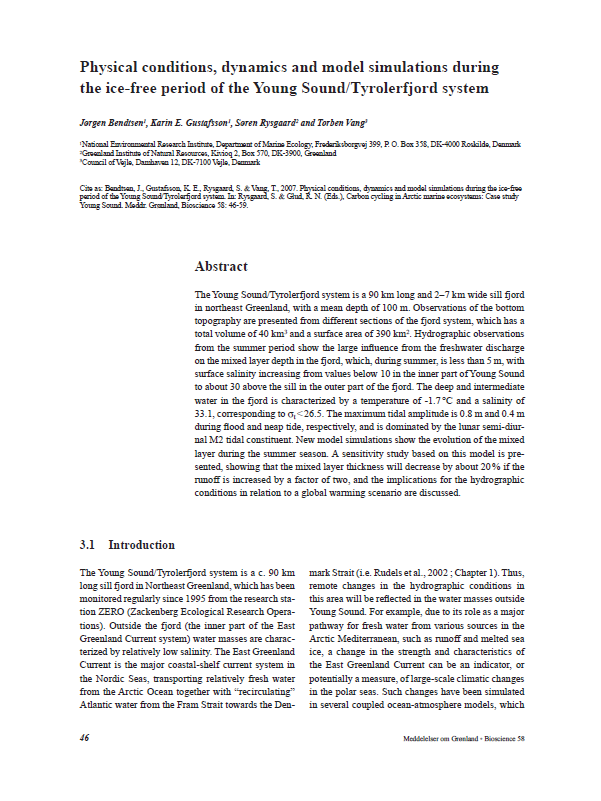Physical conditions, dynamics and model simulations during the ice-free period of the Young Sound/Tyrolerfjord system
DOI:
https://doi.org/10.7146/mogbiosci.v58.142639Abstract
The Young Sound/Tyrolerfjord system is a 90 km long and 2–7 km wide sill fjord in northeast Greenland, with a mean depth of 100 m. Observations of the bottom topography are presented from different sections of the fjord system, which has a total volume of 40 km3 and a surface area of 390 km2. Hydrographic observations from the summer period show the large influence from the freshwater discharge on the mixed layer depth in the fjord, which, during summer, is less than 5 m, with surface salinity increasing from values below 10 in the inner part of Young Sound to about 30 above the sill in the outer part of the fjord. The deep and intermediate water in the fjord is characterized by a temperature of -1.7 °C and a salinity of 33.1, corresponding to σt < 26.5.
The maximum tidal amplitude is 0.8 m and 0.4 m during flood and neap tide, respectively, and is dominated by the lunar semi-diurnal M2 tidal constituent. New model simulations show the evolution of the mixed layer during the summer season. A sensitivity study based on this model is presented, showing that the mixed layer thickness will decrease by about 20% if the runoff is increased by a factor of two, and the implications for the hydrographic conditions in relation to a global warming scenario are discussed.

Downloads
Published
Issue
Section
License
Coypyright by the authors and the Commision for Scientific Research in Greenland / Danish Polar Center/Museum Tusculanum Press as indicated in the individual volumes. No parts of the publications may be reproduced in any form without the written permission by the copyright owners.

